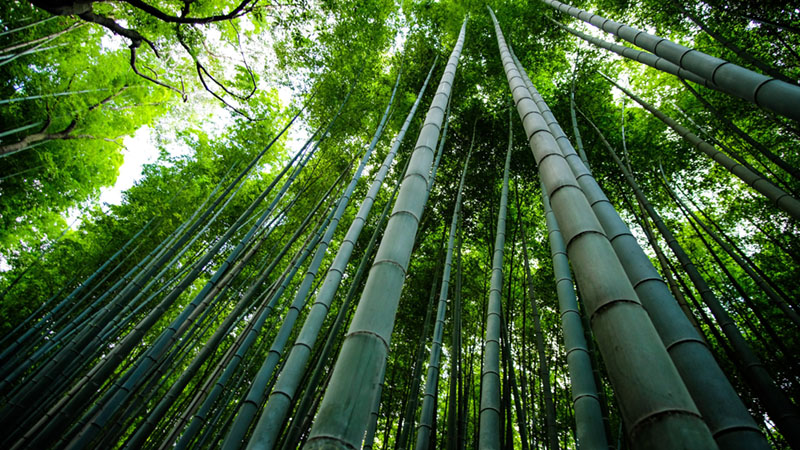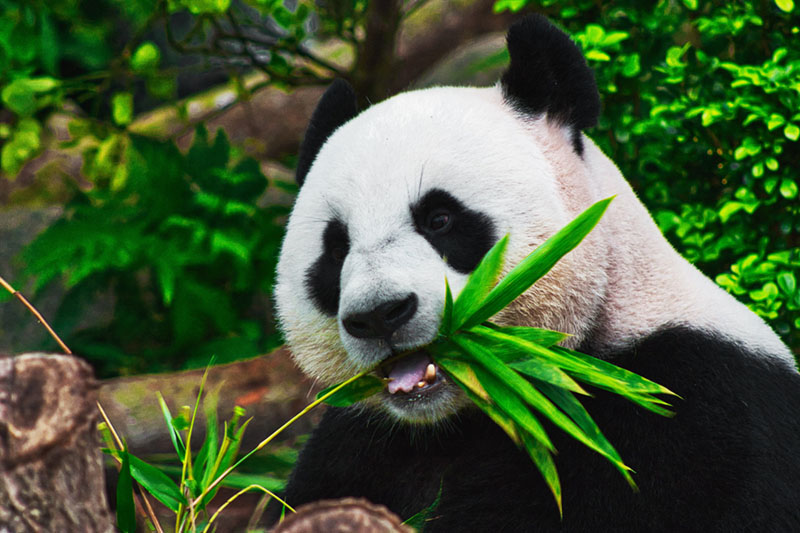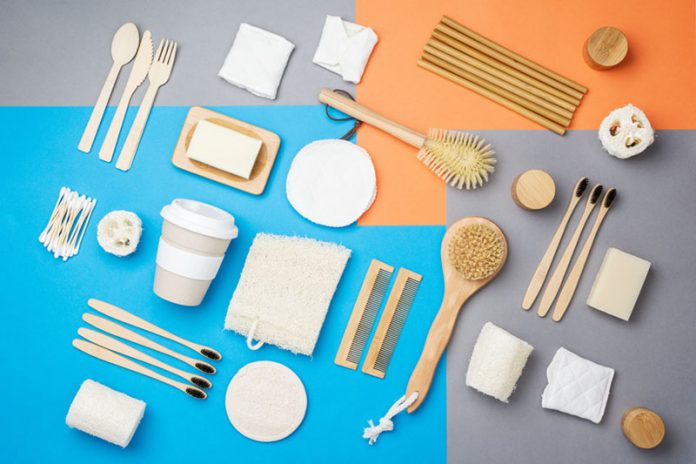Bamboo has left many people bamboozled. It’s been touted as one of the most sustainable materials on our planet (and it certainly is), but some brands and manufacturers have been known to stretch the truth about its eco-friendly nature.
In this article, we’ll explore why bamboo is eco-friendly, but we’ll also elaborate on some of the cases in which it isn’t exactly as eco-friendly as we’ve been made to believe.
Is Bamboo Sustainable or Just a Trend?
If you’ve heard anything about bamboo over the years, you’ve likely heard it referred to as “the world’s most renewable material” or that it’s “the fastest-growing plant in the world.” And these two descriptors are absolutely true, making bamboo a true super plant (not all heroes wear capes, after all).
Unfortunately, we may have gone a little crazy over bamboo. You see, now it’s found in absolutely everything. From toothbrushes to underwear, bamboo has become one of the top words to add to nearly any product.


And if you remember a thing or two about greenwashing (if you need a refresher, head here), you might be starting to wonder if that bottle of bamboo beer or roll of bamboo toilet paper is as sustainable as a company would have you believe.
While we’ve found a few products that should definitely leave the bamboo for the pandas, there’s no need to panic about the set of reusable bamboo cutlery you just bought. For the most part, bamboo truly is a sustainable material. Here’s why.
Reasons Bamboo is an Eco-Friendly Material
Bamboo has been used for thousands of years, and for several different purposes, too. In Asia and parts of South America, bamboo has been embedded into culture and human history. It’s been used for construction scaffolding, turned into flooring, made into paper, and used as a building material. In fact, an estimated one billion people currently live in traditional houses made of bamboo.
It’s clear to see why this evergreen perennial plant (which is surprisingly a member of the grass family) is so loved. And these are some of the reasons why:
- Bamboo is the Fastest-Growing Plant on Earth: Bamboo grows in sub-tropical areas and is an adaptable plant with a quick lifecycle. It can grow anywhere from two to 17 inches every single day, and can reach impressive heights in just four to six months (the average tree takes around 30+ years!).
Plus, when you harvest bamboo, the plant doesn’t die. Interestingly, harvesting some of the poles actually helps the plant do better!
- Bamboo is Great for the Environment: There are a few reasons that bamboo is great for our planet.
First of all it requires very little to grow. It doesn’t require much water and can grow well without fertilizers and pesticides. Compared to trees, it can produce 20x more material on the same plot of land.
Then there’s the fact that bamboo is great at carbon sequestration (absorbing carbon dioxide from our environment). It’s so great, in fact, that it can absorb five times more CO2 than trees—and produces 35% more oxygen in the process!
Thanks to its extensive root system, it can also prevent soil erosion. Bamboo can even be planted in an area with poor soil health and it can regenerate it and transform it to an area where other plants can be grown again.
- Bamboo is Strong and Durable: Bamboo is stronger than steel. Yes, we’ll repeat that because it sounds absolutely crazy: bamboo is stronger than steel. Bamboo has a tensile strength of around 28,000 pounds per square inch, whereas steel tops out at around 23,000 pounds.
It’s also highly elastic (making it good for clothes and building materials), it’s somewhat fire resistant, and its low weight makes it really easy to transport and use. When we compare bamboo to other materials like carbon fiber, plastic, and steel—it’s clear that bamboo is generally a better choice.
- Bamboo is Versatile: While most bamboo is grown in a specific region of the world (65% comes from China), it can be grown anywhere. With more than 1,000 different types, there is enough versatility to suit any visual benefit (different heights and colors), purposes (some can be eaten, some can be used to build homes), and growing habits (come can even tolerate winter temperatures).
But What About the Pandas?
When we think of bamboo, we’re quick to think of the animal it’s commonly associated with: Pandas. Is our bamboo flooring or cutting boards taking the food right out of this animal’s mouth?


This is one of the biggest concerns many people have—however, we can rest assured that most commercially-sourced bamboo comes from areas that do not impact a panda’s breakfast, lunch, or dinner.
However, there are some environmental issues with bamboo that may indirectly impact pandas and other wildlife. There are some questions we should ask ourselves about bamboo before buying:
- How has it been grown? Is the rate at which it’s harvested sustainable?
- Where are the bamboo plantations? Are natural ecosystems being converted or areas being deforested to plant bamboo?
- What are the social and community impacts of this bamboo plantation? Is it providing meaningful work or is it taking over farmland or requiring people to move?
When Bamboo Might Be Too Good to Be True
With these questions in mind, we might start to realize that not all bamboo is equally sustainable. True, the material itself is much more eco-friendly than, say, plastic. But when it’s being planted at a rate or a scale that means that ecosystems are lost and communities are negatively impacted, it’s no longer as “green” as we once imagined.
That’s why it’s helpful to look for products made with either certified organic bamboo or has been certified by the Forest Stewardship Council (FSC).
These certifications make it easy to get truly sustainable bamboo products like chopping boards, furniture, reusable cutlery, and anything else that hasn’t been chemically processed. When it hasn’t been processed, bamboo is naturally biodegradable and is considered to be far superior to other materials.
However, this brings us to the “dark side” of bamboo. Once it’s been chemically processed, its sustainability nearly goes out the window. And there’s one big culprit behind chemically processed bamboo: the fashion industry.
When sustainability became the new black and the fashion industry realized that shoppers were starting to become more interested in eco-friendly materials, bamboo was one of the first places they turned.
Now, we can find bamboo in nearly any garment under the sun, and in most cases it comes with a claim of sustainability (and a price tag to match). Unfortunately, some brands have been known to stretch the truth, as 95% of the bamboo clothing on the market is bamboo viscose.
To make bamboo viscose (rayon), bamboo is processed to release the cellulose, then treated with toxic chemicals and heavy machinery in a highly energy intensive and wasteful process. This renders it a semi-synthetic fabric, which means that it doesn’t biodegrade naturally and it loses some of its natural properties.
Fortunately there are some bamboo clothing options that can be part of a sustainable wardrobe. Here’s what to look for for eco-friendly fashion:
- Natural bamboo linen: Processed mechanically (without the use of chemicals), bamboo can be turned into linen (which is normally made out of hemp or flax). This is great to wear and can be returned to the earth at the end of its lifecycle, but it’s also extremely expensive and labor intensive so bamboo linen products aren’t very common.
- Lyocell-type bamboo fabric: Made popular by the fabric manufacturer, TENCEL, lyocell-type bamboo is processed in a closed-loop method. This means that the chemicals and water are reused (resulting in less waste).
In addition, the cellulose of the bamboo keeps its natural structure, meaning that some of bamboo’s antibacterial, antimicrobial, and antifungal properties are retained.
We get it, this sounds pretty confusing. Fortunately, many brands who use this method, brag about it in a way that’s easy to understand (like this eco-friendly underwear brand).
Bamboozled No More
We join the pandas and Mother Earth in thinking that bamboo is one of the most sustainable materials out there. Sometimes we just have to put on our greenwashing goggles to determine just how sustainable it is.
When in doubt, look for organic or FSC-certified bamboo that hasn’t been processed. When shopping for clothes, look for transparent brands who can share a lot of details about their processing methods.














